Matthew Chalmers and Nina Notman get the lowdown on life as a Nobel laureate at the the 59th meeting of Nobel laureates
Matthew Chalmers and Nina Notman get the lowdown on life as a Nobel laureate at the the 59th meeting of Nobel laureates
Every summer in Lindau, Germany, groups of Nobel prize winners are invited to meet with a new generation of young scientists. This year was the chemists’ turn and the theme of this year’s event was renewable energy and climate change
A life-changing reaction
For Japan’s Ryoji Noyori, as for many Nobel laureates, winning the Nobel prize wasn’t entirely unexpected. Widely tipped as a likely winner, every October for almost a decade the press would surround his house, waiting for the big announcement.
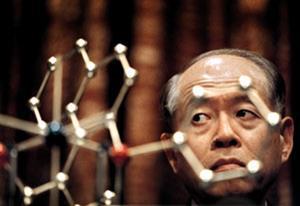
The winning year turned out to be 2001, when Noyori and William Knowles shared half the chemistry prize for their work on chirally catalysed hydrogenation reactions. The other half of the prize that year was awarded to Barry Sharpless for his work on chirally catalysed oxidation reactions. ’I personally consider that catalysis is the most important subject in chemistry and also technology - 80 per cent of all commercial products are made by catalysis and the total market of these commercial products is $7 trillion [?4.3 trillion],’ says Noyori.
While winning the prize may not have been a complete surprise, Noyori considers it his greatest honour. Pride for being given a Nobel prize simply oozes from him, and it seems that the substantial sum of prize money [SKr10 million (?814,000) in his case] was not part of the draw: ’I donated the prize to the university. Many, many people were involved [in this research] and I received the honour on their behalf,’ he says humbly.
And since winning the prize, Noyori’s life has changed beyond recognition. ’Before receiving the prize I concentrated on my research and education at Nagoya University,’ he says. Since winning the prize, Noyori has been on leave from research, becoming heavily involved in helping the government shape the direction of science research and education in Japan. Noyori attributes winning the prize to his appointment as president of Riken - a group of research institutes supported by the Japanese government - a role that he is clearly passionate about. When asked if he enjoys it, however, he coyly answers: ’it’s a challenge.’
Forming alliances
One of Riken’s aims is to promote a harmonious balance between basic and applied research, and this is something Noyori feels can be difficult. ’At Riken we are focusing on basic science which is supported by public money, so the researchers should publish everywhere,’ he explains, ’but companies [focusing on applications] should keep everything secret and patent it. So the relationship between these can be difficult to manage.’ But these collaborations are needed for Japan to maintain its international competitiveness - and strong links between the different Riken institutes are also ’crucially important,’ he adds.
Noyori would also like to see more input from international researchers into Japanese science. ’Only 11 per cent of the researchers at Riken are from abroad, and I would like to double these numbers immediately. But it is extremely difficult because of the language problem and also the cultural barrier.’
Another issue he is passionate about is the quality of Japanese universities. ’Our higher education is extremely poor,’ he exclaims. He says that more money is needed and also a complete rethink of how science is studied in universities. The latter, he says, is a problem that Japan shares with the rest of the world. ’Many people say that chemistry is not ready to solve our energy problems. This is also the case for physics and biology,’ he explains. ’Without comprehensive integration of research disciplines [in universities] we are unable to solve important problems such as energy and climate change. Young people who are going to shape research in the future should have a wider view than we do now,’ he adds.
Nina Notman
The Nobel laureate who just says ’no’
In a world without nuclear magnetic resonance (NMR), footballers would be among the first to suffer, reckons Kurt W?thrich, who shared the 2002 Nobel prize for chemistry for using NMR to unravel the 3D structures of biological molecules. That’s because we wouldn’t have magnetic resonance imaging (MRI), which exploits the intrinsic angular momentum of nuclei to visualise human tissue and is important in medical diagnosis. ’I don’t think there is a top soccer player who has not had his knees in an MRI,’ says W?thrich. ’If it weren’t the case that medics are more widely used to reading x-ray pictures, the impact of MRI would be even greater.’
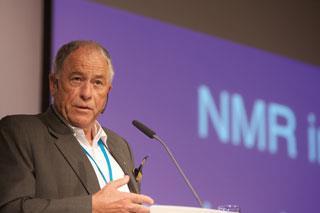
W?thrich, who is jointly affiliated to the Swiss Federal Research Institute (ETH) in Zurich and Scripps Research Institute in the US, was himself a keen sportsman who used to train 25 hours per week. He got ’hooked’ on haemoglobin early in his career, having become interested in ways to increase human stamina. In structural biology, he says, you stick with one molecule - often for life, as did 1962 chemistry laureate Max Perutz (also with haemoglobin). Today, W?thrich is a member of the Swiss anti-doping body connected with the seat of the Olympic committee in Lausanne, where NMR has recently revealed that several top athletes from the 2008 Olympics and the Tour de France were guilty of using performance enhancing drugs. In the name of science, W?thrich has injected himself with such substances and affirms their ’dramatic’ effects.
The use of NMR spectroscopy to reveal the workings of proteins and nucleic acids shows the enormous impact the technique has had across the sciences. The development of NMR was recognised by the 1952 physics Nobel prize, its use in spectroscopy by the 1991 chemistry prize, and its application to MRI by the 2003 Nobel prize in medicine. W?thrich isn’t sure why he didn’t share the 1991 prize with Richard Ernst, with whom he had jointly published for 10 years - but says he is pleased with the way things turned out.
Resisting retirement
Winning the prize hasn’t changed the 71-year-old Swiss scientist’s life as much as some Nobel laureates describe. ’I already had four secretaries and gave 50 lectures a year,’ he says. ’Now I have three secretaries and give plenary lectures rather than talks in parallel sessions.’ However, the prize was useful in holding off W?thrich’s official retirement. Fearing Switzerland would surrender its association with his prize to the US, where W?thrich has another laboratory and retirement laws are less strict, the Swiss government ended up debating the matter in parliament. ’I’ve just been re-hired as a full professor,’ W?thrich smiles.
One trapping of being a Nobel laureate that W?thrich has not embraced is the urge to speak out about matters that he is not necessarily expert in, as revealed by his views on a panel event during this year’s Lindau meeting at which seven laureates debated the role of chemistry in renewable energies. ’I just say "no",’ he says, pointing out that only two of the panel members had expertise in the issue and suggesting that the panel otherwise amounted to a few ’strong egos’.
W?thrich says he accepts that humans are contributing to global temperature rises, but finds it less obvious that so much emphasis should be placed on reducing greenhouse gas emissions. ’Humans have the important feature that they tend to react rather than act, so I’m really optimistic that when things get really critical, those who are left will react - simply to survive.’
Matthew Chalmers
Catalysing an energy revolution
Four years on from winning a Nobel prize, Bob Grubbs has found that being a Nobel laureate has ’made a lot of things easier but hasn’t changed anything in a major way.’ He is still able to devote most of his time to running his research team of 20 people at the California Institute of Technology (Caltech) in Pasadena, US. Life continuing pretty much as before is a typical experience of a US-based laureate, he explains, because there are so many Nobel prize winners working there. ’At Caltech in chemistry there are three Nobel laureates right now out of 30 people. I keep telling our young colleagues that it is going to be our new tenure standard,’ he jokes.
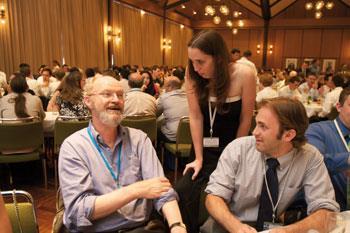
Grubbs shared the 2005 prize in chemistry with Richard Schrock and Yves Chauvin for the development of the olefin metathesis method in organic synthesis. This reaction - which uses catalysts to break and remake carbon-carbon double bonds in such a way that substituent groups are swapped - has greatly impacted many new drug developments, polymeric materials and industrial syntheses.
Winning the Nobel prize isn’t the only reason Grubbs is well known within the chemistry community: the Grubbs reaction, named after his work with ruthenium-based catalysts, is studied by undergraduates the world over. Having a reaction named after you is ’sort of nice’, he says humbly - ’you don’t expect it to actually happen.’
Getting energetic
Grubbs sees ’everything to do with energy’ as the biggest challenge facing the next generation of chemists. ’Energy is a phenomenal topic for chemistry because it covers everything.’ Suggesting solar and wind power as the energy sources of the future is all very well, he explains, but we don’t have the materials yet to make these viable options. ’The end solutions are obvious but how we get there is really going to be tough,’ he adds.
And to do this scientists need money. ’My generation really benefited from the huge influx of money into science after Sputnik - when suddenly in the US we realised the Soviet Union was building bombs and rockets and that we’d better catch up real fast - which led to huge growth in the area, and we now need to do the same thing with energy.’
He also attributes the influx of money after the Soviet Union’s sputnik rocket launch to the disproportionate number of US researchers receiving the Nobel prize since the 1980s. ’I tracked it back to about 1960 when the [US] National science foundation exploded in terms of funding,’ he explains.
Talking about the $21.5 billion economic stimulus bill for science and research that US President Obama signed into law in February, Grubbs says: ’I’m really optimistic and excited, I just hope there will be money left after these two years are up. All the right things are happening,’ he adds, referring specifically to Steven Chu’s appointment as the US secretary of energy.
Metathesis reactions are atom economical, and Grubbs is optimistic that chemists are catching onto the need for their reactions to be sustainable: ’That has been one of the big pushes of the last few years.’ However, simply calling chemistry ’green’ should not be an excuse for doing poor science, he adds: ’It still needs to be really good science, but also be green.’ NN
Mission: education
Had there been a prize for the longest round of applause at this year’s Lindau meeting, Harry Kroto would have won it for his talk, Science, society and sustainability . The rapid-fire presentation was a blaze of graphics, quotes, opinion, numbers and humour spanning all these three topics and more - a veritable brain-dump of the 69-year-old chemist’s world view. But if one had to pick out themes, it was the importance of education and free thought.
Kroto, who shared the 1996 Nobel prize for chemistry for the discovery of fullerenes and is based at Florida State University, US, abhors political and religious dogma and sees them as a threat to our ability to tackle issues such as climate change. But religion in particular gets his hackles up, and what bothers Kroto most is the ability of decision makers such as Tony Blair and George W Bush - who took the UK and US into the Iraq war - to believe in something for which there is no evidence. He sees it as an attack on enlightenment.
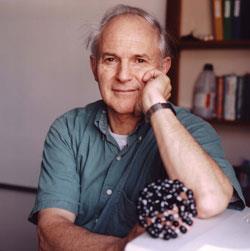
’What has been happening in the 21st century, which is a big surprise to me and to many free thinkers, is the resurgence of belief-based philosophy,’ says Kroto. He retorts that if science is a dogma then it’s a totally different, mechanistic one that concerns how opinions are held, not what those opinions are.
Kroto finds it unbelievable that humanity can’t solve its ’petty little parochial problems’ without sending young people to kill each other. But he thinks these problems trivial compared to global warming and sustainability. ’Just because I got the Nobel prize doesn’t mean I’m a big expert on the future, but I’m 60-80 per cent sure, depending on who I’ve been listening to, that we face a big problem.’ Kroto reckons politicians have no feeling for the scale of the threat, nor the analytical skills to make good decisions at the interface between science and technology.
’You can tell politicians until you’re blue in the face that there are some aspects of science that you can’t predict, but they don’t take any notice,’ he says. ’We’d all like to be able to split water molecules using light, but if it is possible then experience tells us it will come from some guy screwing around in a totally different area, not from a directed research program,’ he continues, pointing out that his Nobel prize winning discovery was made not because he was looking for carbon-60 but because he was interested in the chemistry of stars.
The Goo-You-Wiki world
Kroto views education as his role in tackling the world’s problems, and describes a revolution in the way we access and create information via the conflation of Google, Wikipedia and YouTube (he dubs this the Goo-You-Wiki world). In 1994 Kroto established the Vega Science Trust, which has made over 200 programmes on science and technology, and at Lindau he was keen to publicise his latest education project: geoset.info. ’I’m completely committed for the next year to get universities to recognise that they can help create a globally accessible cache of the best educational material in the world,’ he says.
If nothing else, posting lectures on geoset rather than flying around the world to deliver them should help Kroto reduce his own carbon footprint - something his wife doesn’t think he’s very good at. He drives a modest Honda Civic, though, and might splash out on a Toyota Prius if someone could tell him how much energy it takes to build such green cars.
MC
The chemist who almost wasn’t
Austrian-born scientist Walter Kohn shared the Nobel prize for chemistry in 1998. But to this day, the 86-year-old has never taken a university course in the subject for which he was awarded the prize.
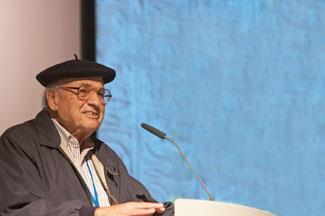
In 1942, having been forced from his home nation Austria during the second world war, Walter Kohn found himself in Canada applying for a place on a science course at Toronto University. But because Kohn’s nationality had automatically changed to German four years previously, the chairman of Toronto’s chemistry department refused him entry to the building.With students required to take chemistry as well as maths and physics, Kohn’s future as a Nobel calibre scientist was put in jeopardy. Fortunately, thanks to the intervention of the dean of the faculty, Kohn was admitted as a special student who would not take the chemistry component of the course.
’It’s easy to think of myself as a physicist rather than a chemist, but I feel bi-cultural,’ says Kohn. ’Physicists emphasise general principles more than chemists, who tend to deal with specific systems. But what I find attractive about chemistry is that it is so enormously useful in people’s lives.’
Kohn has worked on an unusual breadth of topics. He started out in maths, completed a thesis in nuclear physics, worked on quantum electrodynamics, solid state physics, and finally chemistry - winning the Nobel prize for his development of density functional theory (which allowed researchers to calculate complex chemical reaction systems comprising up to 1000 atoms).
Positive predictions
At this year’s Lindau meeting, Kohn chose to focus on something entirely different: an Earth powered predominantly by solar and wind energy. Kohn predicts that oil and gas (which provide 60 per cent of the world’s energy) will be replaced with wind and solar energy by the middle of the century. He believes that this green new world can be realised with existing technology, citing an exponential rise in solar energy use in the past five years. ’Every year, solar energy - and wind similarly - has grown by about 30 per cent, so even if you start with a tiny amount then already in 20 years it will have grown by a factor of 25.’ Kohn called on Lindau’s 600 young researchers to take up the challenge.
Although Kohn spent several years working on semiconductors such as silicon, which are the main material in solar cells, he admits that it was the Nobel prize that opened doors to energy policy. Kohn was a member of the science advisory committee of the US Department of Energy during the George W Bush administration - although he eventually came to see the committee partly as a cover for the non activity of the Bush government on the energy/climate problem.
Kohn sees it as his responsibility as a member of the human race to do something about the looming energy crisis. It’s part of a commitment to a humane and peaceful world that also once saw him active in attempts to end the US-Soviet nuclear arms race.
Indeed, it was the events of war that drove Kohn (whose parents were both killed in the Auschwitz concentration camp) towards science in the first place, having at the age of 15 been moved to a Jewish school in Vienna where the director, a physics teacher and (as Kohn would later learn) a former assistant of Einstein, inspired him. ’I was able to forget, at least temporarily, the brutalities that went on and appreciate the beauty of science.’ MC






No comments yet